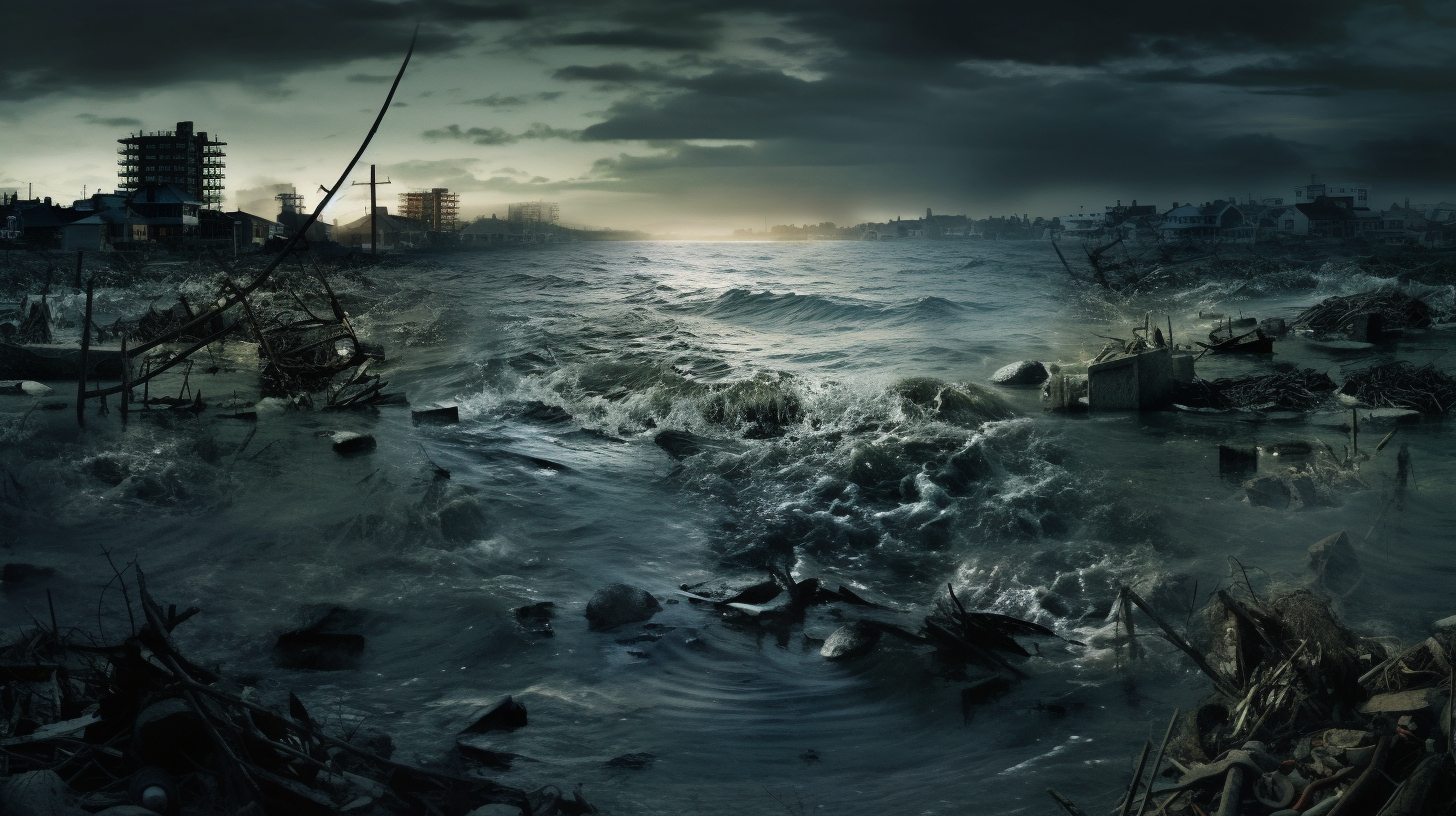Imagine stepping onto your favorite beach, only to find that the familiar caress of sandy shores beneath your feet has succumbed to the insatiable maw of the sea. The sunsets that once painted memories on the canvas of the horizon, now bleed their melancholic hues into an abyss, where land once stood. Our coastlines are vanishing, not with a dramatic clash, but with the stealthy swiftness of a thief in the night.
The demise of our coastal borders is not a fable; it’s the catastrophic screenplay of our present existence, script written with relentless precision by climate change. In their sorrowful silence, the disappearing coastlines narrate a tale of unchecked human ambition and the untold repercussions of our avarice. What once were bustling hubs of life and recreation are now eerily deserted; echoes of laughter and joy are now just the ghostly whispers, as our seashores retreat, defeated by the swelling oceans.
One might recall the quaint scenery of coastal towns, vibrant and full of life, which are now forever swallowed by the ceaseless rise of sea levels. With each passing year, we witness the insidious encroachment of saltwater and the relinquishment of yet more land. Through the lens of the observer, these changes are woven into the fabric of a creeping normalcy, a dismal progression so slow that its alarm fails to resound with the urgency it fiercely demands.
Yet, it is not merely land we lose. It’s a cascade of consequences, toppling one after another: it’s the disruption of finely balanced ecosystems, the displacement of millions seeking climate refuge, the insurmountable challenge to already suffocated economies, and the cultural erosion of civilizations whose heritage sink beneath the waves. A recent study unveils the grim prospect that coastal erosion could lead to the loss of up to 50% of sandy beaches by the end of the century, naturally occurring sandbanks going extinct as swiftly as the creatures that once thrived upon them.
It’s not just natural beauty or nostalgic havens we bid farewell to; certain scientific innovations and infrastructures now lay in ruins. The robust architects of yore, who once erected defiant barriers against the natural world, would reel in disbelief at the sight of their work undone by the very elements they sought to outwit. Where breakwaters and sea walls were the bulwarks against a encroaching sea, they now succumb to it, piece by piece, into the abyss.
To explore this ongoing tragedy, our inquiry probes deep into the heart of affected areas. Accounts from locals paint a dolorous portrait of resignation. “We used to see the water as a friend,” a fisherman laments, “But now, it’s as if the ocean bears a grudge, reclaiming more land each day.” His testimony is not unique but echoes in every coastal town that watches its existence crumble into the surf.
The dialogue on this topic is often tarnished with political colour, yet one inescapable truth remains clear and stark – there is no time left for debate. The call to action is now a howl into the void, where once it was a whisper in a bustling marketplace. Urgency is not just a sentiment; it’s the very currency of our survival.
As we continue to chronicle these shifts, the intent remains not to serve as Cassandra’s echo but to wield the pen as a sword against lethargy and denial. While our articles stand testament to the current plight, they also serve to shock the societal consciousness awake from its slumber, into perhaps a moment of reflection, or better yet, a bout of action.
Where the future is written, let it not be said that our inaction was a contributor to nature’s relentless redaction of our coastlines. May the chronicles of our disappearing shores serve as a charge against the collective inertia that plagues the helm of human stewardship over nature.
